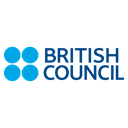Executive Secretary

III Conferencia Científica Internacional "Retos de la Educación 2023"
El artículo analiza el proceso de enseñanza-aprendizaje de la Historia Contemporánea a través del empleo de la prensa como respuesta a los nuevos cambios de plan de estudios, desde un proceso de enseñanza-aprendizaje desarrollador, ameno, flexible e independiente en la enseñanza secundaria. El objetivo propuesto, escaracterizar el proceso de enseñanza-aprendizaje de la Historia Contemporánea y la prensa en la enseñanza secundaria. Su realización, guiada por un enfoque mixto de investigación, mediante la utilización de los métodos histórico-lógico y el análisis-síntesis para el estudio de las posiciones teóricas que fundamentan el proceso de enseñanza-aprendizaje desarrollador, ameno, flexible e independiente y la precisión de las características y exigencias del empleo de la prensa en el proceso de enseñanza-aprendizaje de la Historia Contemporánea en la enseñanza secundaria. La caracterización realizada permitió enriquecer los criterios incluidos inicialmente por los autores del artículo y permite a los profesores estimular el empleo de la prensa en el proceso de enseñanza-aprendizaje de la Historia Contemporánea y su valoración por parte de los estudiantes y docentes que imparten esta asignatura en la enseñanza secundaria donde se realiza la investigación.
Introduction: The article analyzes the teaching-learning process of Contemporary History through the use of the press as a response to the new changes in the curriculum, from a developer, entertaining, flexible and independent teaching-learning process in teaching. secondary. The proposed objective is to characterize the teaching-learning process of Contemporary History and the press in secondary education. Methods: Its realization, guided by a mixed research approach, through the use of historical-logical methods and analysis-synthesis for the study of the theoretical positions that support the teaching-learning process that is developer, entertaining, flexible and independent and the precision of the characteristics and demands of the use of the press in the teaching-learning process of Contemporary History in secondary education. Conclusions: The characterization carried out allowed enriching the criteria initially included by the authors of the article and allows teachers to stimulate the use of the press in the teaching-learning process of Contemporary History and its assessment by students and teachers who teach this subject in secondary education where the research is carried out.
Sobre el ponente

Jhoannis Jacinto Rodríguez Avalos

Discussion
